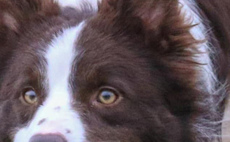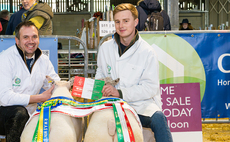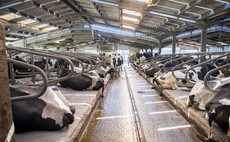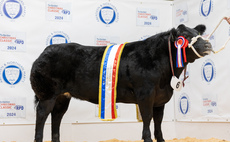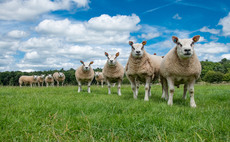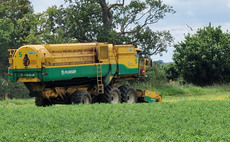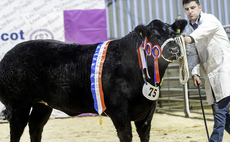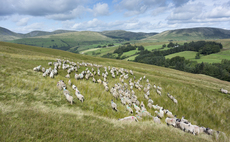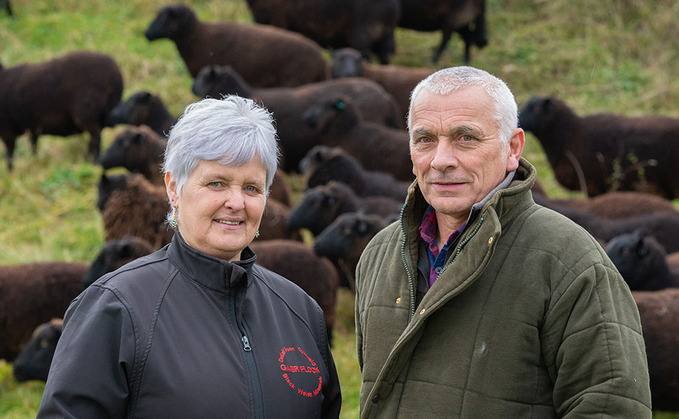
AS the Black Welsh Mountain Sheep Breeders' Association enters its centenary year, Hannah Noble visits the high-profile Gaer flock to find out more about the breed.
The success of the Gaer flock is the result of 30 years of passion from prominent breeders Dyfed and Rowena Rowlands, Anglesey.
Back in 1989 their young daughters, Iona and Ffion, now both grown-up and farming on the island in their own rights, were keen to find a breed of sheep to show. After visiting the Royal Welsh Show on holiday and assessing the merits of a diversity of breeds, they eventually settled on the Black Welsh Mountain.
Mrs Rowlands says: "The girls grew up and we continued breeding and showing; we absolutely love them."
The couple are now joint holders of the breed record price of 1,900gns for a two-year-old ram, Gaer Yankee-Doodle, which was sold at last year's society sale at Raglan to new young breeder, Owain Davies, Crickhowell.
Known for being the only completely black breed of sheep in the UK, they are the manifestation of a genetic mutation of the traditional Welsh Mountain and they are similarly well suited to living in harsh mountainous environments.
The Black Welsh Mountain Sheep Breeders' Association was formed in 1920 and is celebrating its centenary throughout 2020. As a past chairman of the society, Mr Rowlands knows the importance of such associations.
He says: "The council members keep the breed going and support new breeders. We are lucky to have a lot of young people coming into the breed, they are so important, after all, we are not going to be here forever."
"I have been a member of a lot of breed societies over the years and this is one of the best. We all like to win, but once we are out of the showring we are all great friends."
The Black Welsh Mountain Sheep society has about 300 members, with about 150-180 new rams registered each year. The largest registered flock, comprising about 200 ewes, belongs to Devon breeders Mr and Mrs Penna, but the average flock size is about 30 ewes.
Mr and Mrs Rowlands' four-hectare (10 acre) farm, Isallt, is home to their flock of 50 breeding ewes, 23 ewe lambs and nine rams. As well as Isallt, the Rowlands rent an additional 6ha (15 acres) close by, and all the land lies just 60 metres above sea-level. Previously, they had a flock of Texel ewes and bought-in dairy-bred calves to rear.
They bought their first pair of Black Welsh Mountain ewes at the Abergavenny Society Sale and then went across the country looking for a few more in the same year. The initial flock comprised about 10 ewes.
Mr Rowlands says: "We are lucky on Anglesey with the good ground we have, but most of the flocks are down in South Wales and Monmouthshire, and the Black Welsh Mountain is great at converting poor quality grass to meat."
Mr Rowlands says because of the farm's quality land, the sheep have a tendency to get too large, so he says it is important to keep the type and good quality in the breed.
The ram is put in with the ewes on September 1 and Mr Rowlands says he finds they usually come into season about two weeks after, which means lambing starts around mid-February.
He says: "We have crossed a Beltex ram onto the Black Welsh Mountain ewes and got some really nice 40kg lambs in the past, but now we keep them mostly pedigree as we do not have enough land to breed commercial ewes too.
"A handful of older ewes this year however have gone to a Bluefaced Leicester ram to produce Welsh Mules, which will most likely be black."
The 2019 lambing season saw 42 ewes lamb in just 16 days.
Mrs Rowlands says: "The ewes are fertile and are known for having twins and plenty of milk."
All ewes are lambed inside, although many other breeders lamb outside, and as Mr Rowlands works full-time on a local sheep farm while Mrs Rowlands works shifts in a supermarket on the mainland, the work is split between them.
Cameras are used to keep an eye on the lambing pens through the night.
Mr Rowlands says: "The ewes are so easy to handle and the lambs are frisky, up and looking for the teat in a matter of three or four minutes.
Showing is a huge part of Mr and Mrs Rowlands' life and they usually attend at least 10 shows each year. To prepare for the show season, a team of about seven sheep are selected from the flock and are sheared early in the season, with the society rules stating they must be shorn after the January 1. They are washed just once, at Easter, and halter training and clipping follows, all carried out by the couple.
The Rowlands family home is covered in trophies and rosettes and sashes of every colour, but a few of their highlights included winning the inter-breed group of three at the Royal Welsh Show in 2013 and taking the hill and mountain championship at the Welsh Winter Fair in the same year. They also won the Welsh Winter Fair again in 2016 and in 2019 they scooped the overall inter-breed and inter-breed group of three at Flint and Denbigh show.
In addition to attending the shows each year as competitors, both Mr and Mrs Rowlands regularly officiate as judges.
Mr Rowland has twice judged Black Welsh Mountain sheep on their home turf, at the Royal Welsh Show, and other significant shows for the breed, such as the Royal Bath and West Show and the Welsh Smallholding and Countryside Festival.
He says: "Teeth and legs are the most important thing to look for when judging any breed, followed by the specific breed points.
"When I am judging the females I am looking for a nice fine head. The ears must be small and we do not want to see any horn buds whatsoever.
"One of the most difficult things to get right in the breed is the wool. It must be completely black with no white to grey in it at all. They must have good length in the body and a broad breast.
"With the males, I like a powerful head, not too heavy in the horn, and there must be a gap between the head and the horn. I like a lot of length and power in my rams. They must be straight across from the shoulders to the back."
Mr and Mrs Rowlands together have also had the honour of judging the young handler's competition at the Royal Welsh Show, which saw 42 young people from across a variety of breeds competing.
Mr Rowlands says: "In the showring, you get some good years and some lean ones, which is what pushes you to come back year after year."
But one thing is for sure, the Gaer flock has a bright future, with all seven of Mr and Mrs Rowlands' grandchildren showing a keen interest in helping prepare and show the sheep.
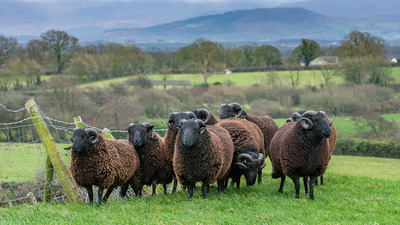
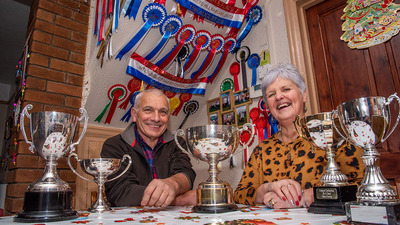

51AVÊÓƵfacts
- The whole flock is descended from two lines going back to some of the flock's foundation ewes
- Mr and Mrs Rowlands use EID tags and a stick reader to track the families
- Ewes are scanned mid-December and most are usually carrying twins
- The couple feed a home-mixed blend to their show sheep






